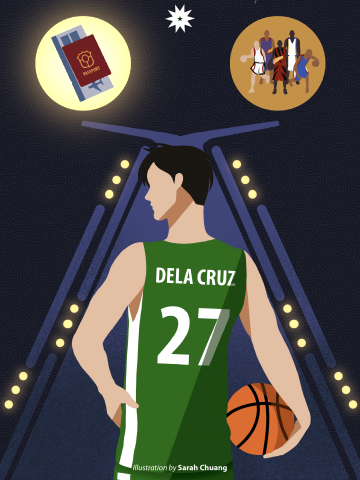
The days of the Philippine Basketball Association (PBA) as the premiere destination for local amateur athletes are long gone, as the choice of going abroad to hone skills and get more exposure is starting to catch the eyes of our country’s top talents. A popular destination has been the Japanese B.League, with Thirdy Ravena paving the way for his fellow athletes when he first signed with San-en NeoPhoenix back in June 2020.
Other athletes who have followed suit are Juan and Javi Gómez de Liaño, as well as Kenmark Cariño and Kiefer Ravena. There have been several rumors circulating that other top local college prospects have received offers to play in Japan but no official news havebeen published.
Having different opportunities elsewhere from PBA provides a breath of fresh air because local prospects have the chance to showcase their talents against international competition. With new opportunities for training and development, the question now stands: Does the B.League offer better exposure and level of play?
A golden opportunity abroad
The B.League is Japan’s first division basketball league and premier league. Being a relatively young league formed back in 2016, they have quickly set themselves up as one of the top leagues in Asia. The B.League currently offers a lot more than any of the local leagues. An import would make approximately USD 200,000 to USD 400,000 net per year, and, according to Ravena’s agent in an interview with The Manila Times, this is the range of the salary Ravena is getting compensated with at the moment. Safe to say that the bigger the market, the bigger the pay.
For players, this is a chance to perform on the international stage on a consistent basis, going up against international players and different imports regularly. Japan has never been known to be a basketball-driven country. However, in recent years, they have been working hard to change that reputation. Japan has been able to develop a number of their local talents into valuable international players, with a handful of them competing in the world’s best leagues. Yudai Baba, who was formerly a member of the Texas Legends in the National Basketball Association (NBA) G-League, was also an integral piece in Melbourne United’s championship conquest.
Two of Japan’s top players are currently signed in the NBA, the top basketball league in the world. Yuta Watanabe, who is a member of the Toronto Raptors at the moment, broke out last season and proved to be a good rotational piece for their squad, shooting at about 40 percent from three-point range. Rui Hachimura, who is already one of the top young talents in the NBA, is currently playing for the Washington Wizards. All three played basketball in Japan on the amateur level prior to taking the next step abroad, and they were also regular names in their national team. These players are testament to how the recent and rapid rise of the different basketball programs in their country has shaped them today.
Elevated level of play
Although Japan is sitting at the 42nd spot of the FIBA world rankings, having the opportunity to constantly go up against international talent, imports, and having more games per season is a more efficient way to develop the skills of players. What the B.League offers that no other local leagues can offer to players is the opportunity to face the top teams in Asia in a separate pocket tournament.
The FIBA Asia Champions Cup is a separate tournament designed to gather the top teams in Asian basketball. A few of the leagues that consistently participate are the Chinese Basketball Association, Korean Basketball League, and Japan’s B.League. As a matter of fact, the reigning champions currently hail from the B.League, as Alvark Tokyo breezed through the final against Al Riyadi, 98-74.
Being able to have the opportunity to qualify and go up against the continent’s best is one of the B.League’s most intriguing factors together with the number of reps the players will have going up against international-level talent.
The B.League offers more exposure to its players, and being a part of Asia’s biggest club tournament helps that. Moreover, the B.League allows multiple players from different nationalities to participate in their league, from Asians to Westerners. The league does not limit itself to its own citizens and is progressive enough to acknowledge that in order to have an elevated level of play, you need the best available players in the world.
Going against the current
Japan has been developing into a lethal basketball country able to shell out a couple of NBA-level players. You cannot blame our players for taking a different route than what the others have done in the past. Grabbing different opportunities that may lead to places that no other player has ever been to has been an ongoing theme with this new crop of young talent.
The players ultimately choose between a unique path that may lead them to places no other Filipino basketball player has ever been to. Although they go against the current, these athletes made calculated career decisions and went for it. They showed bravery in their decision and deserve to be branded as successes just by being in the position they are in right now. Down the road, we may be looking at this current batch as the batch that started a change and further etched the Filipino name into foreign basketball leagues.
